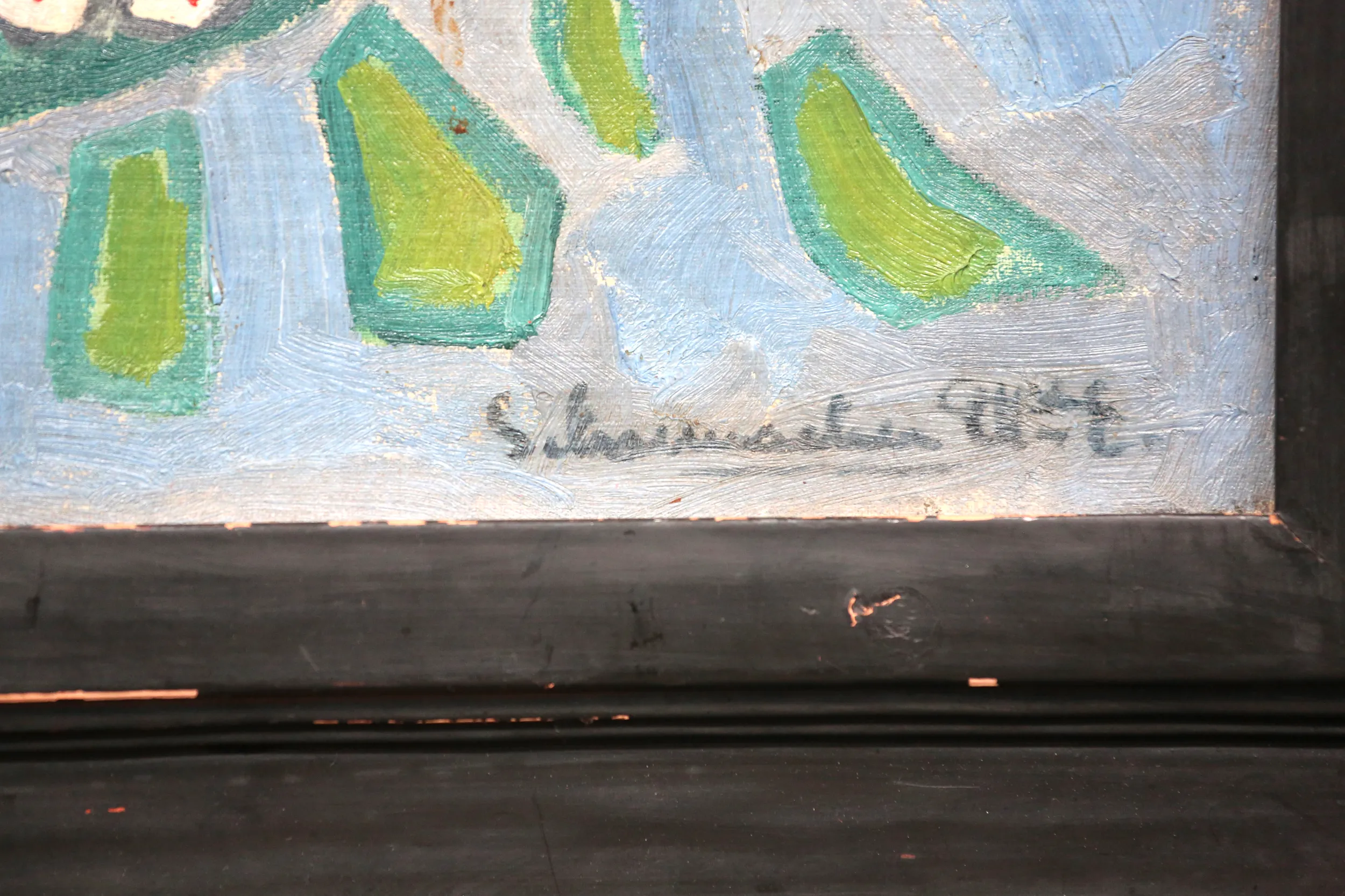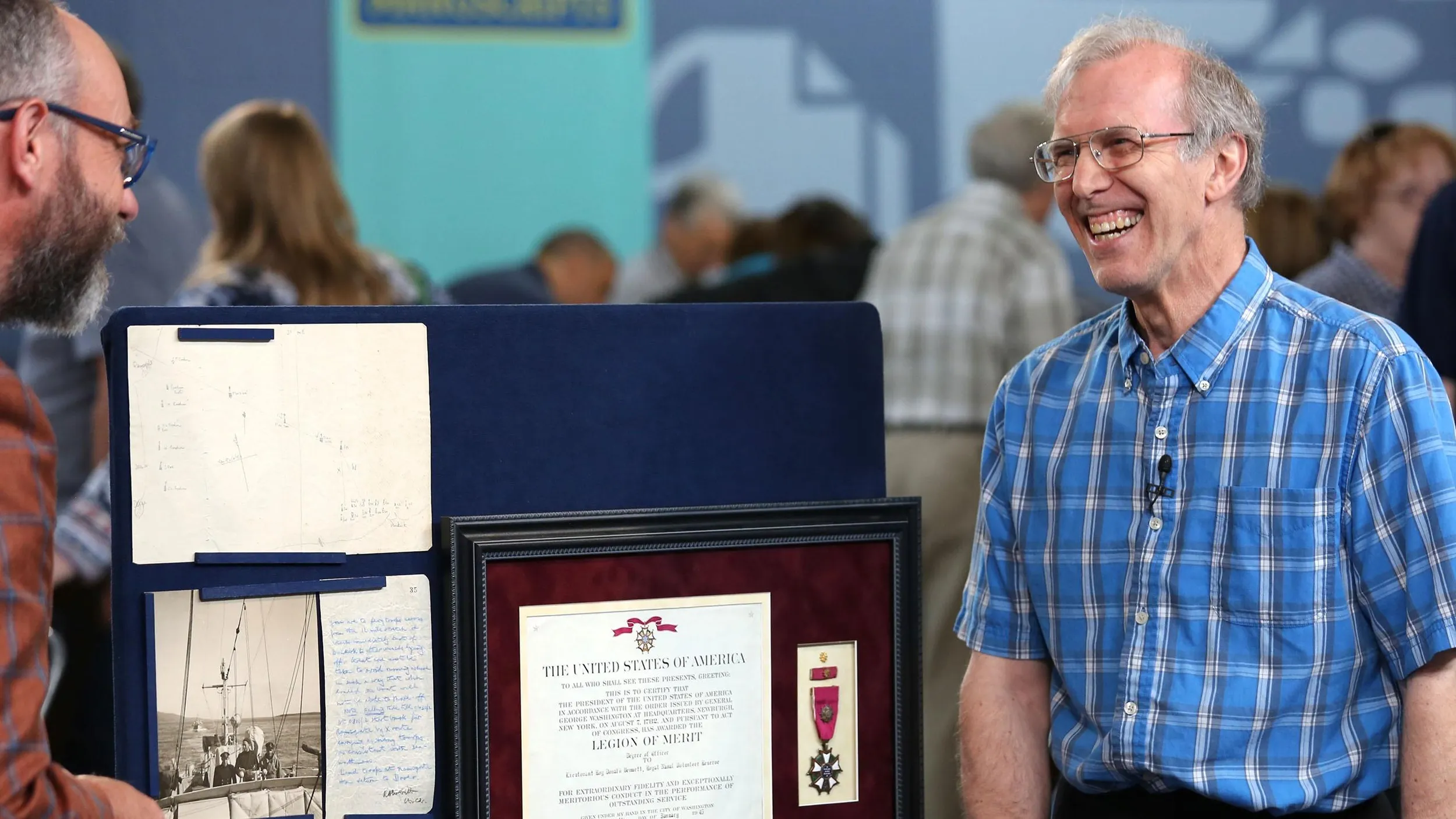GUEST: This was bought by my great-aunt, who was an art collector, who bought a lot of stuff for Isabella Stewart Gardner, for the Boston museum. I don't know where she bought it, but she gave it to my grandmother, who was her cousin, possibly as a wedding present, but we don't know. So all my dad knows is that it was always in the house from the time he was little, and then it passed onto me. We were always so interested in who Schumacher was. I have another painting by him, but it's very different from this. My great aunt had some affinity with Gertrude Stein in Paris. I don't know if that was where the connection was made. I know that at one point Schumacher was painting in Woodstock, New York.
APPRAISER: Well, the artist is William Schumacher, William Emile Schumacher. He was actually Belgian-born, and then he grew up in Boston…
GUEST: Oh.
APPRAISER: …and was raised there.
GUEST: Yeah.
APPRAISER: But then went back to school in Dresden, in the academy there, and then transferred to Paris, the Académie Julian, where many American artists went as well...
GUEST: Oh.
APPRAISER: And then came back to the States. He was also kind of a sponge. He sort of learned a number of different techniques. He was influenced by the deep colors of Fauvism, the bright colors there, the pointillism of Seurat, the Impressionists as well. So he had all these influences. What you have is a beautiful garden here. Sort of an island of a flower bed, with these large flowers-- probably poppies and roses-- that are coming up through here. One of the things, I said he had a variety of styles, but this one is very interesting because it seems to almost embody the sort of abstract geometricism and decorative qualities of the Vienna Secession.
GUEST: Oh.
APPRAISER: And you see in here, much of the work almost of Klimt, with a sort of...
GUEST: Oh, right.
APPRAISER: ...pattern of these little dots here, these sort of rectangular works, these little spots, and all of this going through here, in this very... brocade of flowers.
GUEST: Yeah.
APPRAISER: And you even get into the trees up here, they're all angular through there.
GUEST: Right, right.
APPRAISER: This is a nice size oil on canvas. This was probably painted right after the Armory Show of 1913, around 1913, 1914. Because it had a profound influence…
GUEST: Yeah.
APPRAISER: …on many American artists at that time.
GUEST: Yeah.
APPRAISER: He also, at that time, was at the height of his interest in New York. He had three shows from 1913 to 1915.
GUEST: Oh, really?
APPRAISER: I wouldn't be surprised if this was a leading piece in there. Another thing about it is it's a good painting because it's in a great frame, too.
GUEST: I love the frame.
APPRAISER: Although it looks all beat up. It's lost... has loss, and that can be fixed... It's a Cassetta frame, and then-- and the inside, these up here, it actually does some subtle things. If you can see this, the carving is sort of variegated so it's not just flat. And if you look in the back here, these darts that are part of the construction, which are very typical of a Newcomb-Macklin frame, which is one of the great frame makers of the first part of the 20th century.
GUEST: Oh.
APPRAISER: So it's a really good frame.
GUEST: Yeah.
APPRAISER: So it's also a very important painting. The thing about this painting, though, is when it walked in…
GUEST: Yeah.
APPRAISER: …we were just stunned.
GUEST: Yeah.
APPRAISER: My colleague said, "Star power." The highest he's ever made at auction was $20,000.
GUEST: Yeah.
APPRAISER: We would most likely estimate this at $40,000 to $60,000.
GUEST: Oh, jeez.
APPRAISER: And expect it to go even beyond that...
GUEST: Oh my gosh.
APPRAISER: ...because this has such a power, such a presence...
GUEST: Yeah. It does.
APPRAISER: ...such a beautiful, strong painting.
GUEST: It does. I mean, I love this painting. So I mean I can't imagine ever selling it.
APPRAISER: Yeah.
GUEST: It's just... I'm so attached to it.





